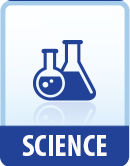|
This section contains 509 words (approx. 2 pages at 300 words per page) |

|
Viviparous reproduction involves the fertilized egg (or zygote) being retained within the uterus of the female, where it is nourished by nutrients and gases (especially oxygen) passing from the mother across a specialized, blood-rich tissue known as the placenta, which is connected to the embryo by a cord-like umbilicus. Waste chemicals pass the other way across the placenta, from the developing embryo to the parent, who excretes them with her own metabolic wastes. The embryo grows and develops under these conditions of close, maternal nourishment. It is eventually born as a "live" young that can exist externally, although for some time it is still dependent upon its mother for nourishment and care. The time between fertilization of the egg and birth of the young is known as the gestation period.
Viviparous animals are different from oviparous ones, which lay shelled eggs that incubate externally to the mother's body...
|
This section contains 509 words (approx. 2 pages at 300 words per page) |

|


